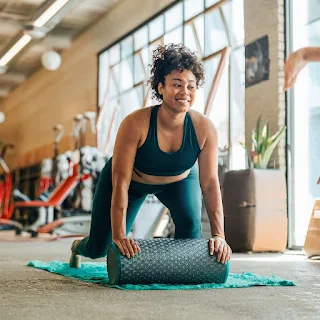Introduction to Mobility and Flexibility
In the pursuit of a healthy and active lifestyle, achieving optimal mobility and flexibility is paramount. These two elements are often overlooked but play a crucial role in enhancing physical performance, preventing injuries, and maintaining overall well-being.Importance of Mobility and Flexibility
Mobility refers to the ability of a joint to move freely through its full range of motion, while flexibility pertains to the length of muscles surrounding a joint. Both are interconnected and essential for functional movement patterns in daily activities and exercise routines.Understanding Mobility vs. Flexibility
While mobility and flexibility are related, they are not interchangeable. Mobility involves joint mechanics and the surrounding soft tissues, whereas flexibility primarily focuses on the muscles' elasticity and length.Benefits of Optimal Mobility and Flexibility
Optimal mobility and flexibility offer numerous benefits, including improved posture, enhanced athletic performance, reduced risk of injuries, increased blood circulation, and better overall movement efficiency.Common Challenges to Mobility and Flexibility
Many factors contribute to restricted mobility and flexibility, such as sedentary lifestyles, poor posture, muscle imbalances, aging, previous injuries, and inadequate warm-up routines before physical activities.Techniques to Improve Mobility and Flexibility
- Stretching Exercises: Incorporate dynamic and static stretching routines targeting major muscle groups to improve flexibility and range of motion.
- Mobility Drills: Perform mobility exercises focusing on specific joints and movement patterns to enhance joint mobility and stability.
- Foam Rolling Techniques: Utilize foam rollers and self-myofascial release techniques to release tension in muscles and improve tissue quality.
Integrating Mobility and Flexibility into Daily Routine
Make mobility and flexibility exercises a regular part of your daily routine, whether it's through dedicated stretching sessions, yoga practice, or incorporating mobility drills into your workout regimen.Nutrition and Hydration for Enhanced Mobility
Proper hydration and nutrition are crucial for maintaining healthy muscles, joints, and connective tissues. Ensure adequate intake of water, electrolytes, and nutrient-rich foods to support tissue repair and recovery.Importance of Rest and Recovery
Allowing adequate rest and recovery time between workouts is essential for preventing overuse injuries and promoting tissue repair. Incorporate rest days into your exercise routine and prioritize quality sleep for optimal recovery.Overcoming Plateaus in Mobility and Flexibility
Plateaus are a natural part of the journey towards improved mobility and flexibility. Experiment with different techniques, vary your routines, and be patient with your progress to break through plateaus effectively.Listening to Your Body
Pay attention to your body's signals and adjust your training intensity and volume accordingly. Pushing through pain or discomfort can lead to injury and setbacks in your mobility and flexibility goals.Seeking Professional Guidance
Consulting with a qualified fitness professional, physical therapist, or mobility specialist can provide personalized guidance and tailored exercises to address specific mobility and flexibility issues.Lifestyle Changes for Improved Mobility
Incorporate lifestyle changes such as maintaining good posture, staying active throughout the day, and avoiding prolonged sitting to promote overall mobility and flexibility.Tracking Progress and Setting Goals
Keep track of your mobility and flexibility gains by documenting measurements, monitoring improvements in range of motion, and setting realistic goals to strive towards.Conclusion: Embracing a Mobile and Flexible Lifestyle
In conclusion, achieving optimal mobility and flexibility is a journey that requires dedication, consistency, and patience. By incorporating targeted exercises, proper nutrition, rest, and mindful movement practices into your daily routine, you can unleash your body's full potential and enjoy the countless benefits of enhanced mobility and flexibility.FAQs:
Q1. How often should I perform mobility and flexibility exercises?Aim to incorporate mobility and flexibility exercises into your routine at least 3-4 times per week, ideally after a warm-up or as part of your cool-down.
Q2. Can I improve my mobility and flexibility at any age?
Yes, regardless of age, consistent practice of mobility and flexibility exercises can lead to improvements in joint mobility and muscle flexibility.
Q3. Are there specific exercises for improving mobility in certain joints?
Yes, there are various exercises and drills tailored to specific joints, such as hip openers, shoulder rotations, and spinal mobility exercises.
Q4. Should I stretch before or after my workout?
It's beneficial to incorporate both dynamic stretching before your workout to prepare your muscles for movement and static stretching after your workout to improve flexibility and aid in recovery.
Q5. What should I do if I experience pain during mobility exercises?
If you experience pain during mobility exercises, it's essential to stop immediately and assess the cause. Consult with a healthcare professional or fitness expert to address any underlying issues and modify your exercise routine accordingly.















0 Comments